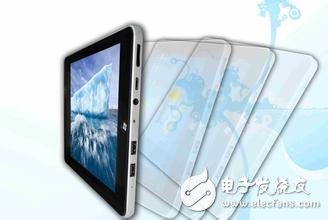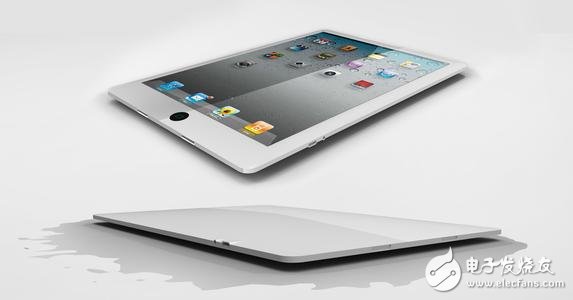I. Introduction Tablet PCs appeal to many consumers with its beautiful appearance, thin body and high-speed processor. The LCD screen is the most popular space for tablet PCs. The most attractive LCD screen is the rich color and high resolution LCD display. The display is therefore essential for tablets, and it is the most intuitive quality of the tablet in the eyes of consumers. The LCD display now has full color to make images and videos play better. We say that the two elements of the image are brightness and chromaticity, brightness is the intensity of light per unit area, and the difference from light to dark is also called contrast. They are the embodiment of the characteristics of the object itself. The chromaticity is the absorption of light by different objects (or The embodiment of reflection). Additionally, in display technology, a pixel is the smallest basic unit of an image that determines the resolution of the image. Therefore, brightness and resolution are two important indicators of LCD display. Generally, the LCD display is selected according to the brightness and resolution. High brightness can bring high contrast, which makes the image color and definition look better. Make the image display more delicate and the outline clearer. Second, the working principle of the LCD display Let's briefly introduce the working principle of the LCD screen, ie the LCD screen: The name "LCD" sounds like a contradiction. We think that crystals are solid materials like quartz, which are usually as hard as stones, and liquids are significantly different from it. How can a material contain both "liquid" and "crystal"? Liquid crystal is neither solid nor liquid, its state is closer to liquid rather than solid. A major feature of liquid crystals is that their properties are affected by current. There is a special nematic phase liquid crystal called a twisted nematic phase (TN) liquid crystal which is distorted in a natural state. When current is applied to the liquid crystal, they will be reversed by a corresponding angle depending on the magnitude of the applied voltage. This liquid crystal reacts very accurately to current and can therefore be used to control the flow of light for use in fabricating LCDs. Liquid crystal display (LCD) is composed of two parallel thin glass plates. The distance between the two glass plates is very small, and the liquid crystal body is divided into small cells. The liquid crystal panel itself does not emit light, and it illuminates the liquid crystal screen through the backlight of the liquid crystal panel. The advantages of the LCD screen are small size, light weight, large display area, stable picture, no radiation, low energy consumption and environmental protection. Response time, contrast, brightness, screen dead pixels, viewing angle, dot pitch, bandwidth, and thickness are several important indicators for measuring LCD displays. Third, the classification of LCD display According to the material structure of LCD (liquid crystal), liquid crystal can be divided into three categories: TN, STN, TFT, etc. According to the current technical principle, they can be further divided into TN, STN, FSTN, DSTN, TFT, etc. category: 1. TN type LCD The so-called TN refers to the Twisted NeumaTIc twisted nematic array LCD. 2. STN type LCD The so-called STN refers to Super Twisted NeumaTIc super twisted nematic array LCD , commonly known as monochrome LCD. 3. DSTN type LCD The so-called DSTN refers to the Dual Super Twisted Neumaic double super twisted nematic array LCD (so-called micro-color LCD), which means that the twisted nematic liquid crystal display is scanned by double scanning to achieve the purpose of display. The brightness and contrast of each pixel on the DSTN display cannot be controlled independently, and the display effect is not good, but it has a simple structure and consumes less energy. 4. FSTN type LCD The so-called FSTN refers to the Film Super Twisted NemaTIc super-twisted nematic array LCD. 5. TFT type LCD The so-called TFT refers to the Thin Film Transistor chip transistor LCD (so-called true color LCD), which means that each liquid crystal pixel is driven by a thin film transistor integrated behind the pixel, so that high speed can be achieved. , high brightness, high contrast display screen information. TFT LCD technology is a high-tech combination of microelectronic technology and LCD technology. The resolutions are CGA (320 & TImes; 200), VGA (640 × 480), SVGA (800 × 600), XGA (1024 × 768), SXGA (1280 × 1024) to UXGA (1600 × 1200) and the like. Fourth, the main types of tablet LCD display At present, the size of the LCD screen of the tablet computer is basically 7 inches, 8 inches, 9.7 inches and 10.1 inches, all using TFT LCD. The tablet manufacturer generally uses LCM (LCD Module), which is a component that assembles liquid crystal display devices, connectors, integrated circuits, PCB boards, backlights, and machine components. It is generally called a liquid crystal display module. . The liquid crystal display module has analog and digital points, and the digital signals are on the screen pixels. The main difference is in the circuit, that is, where the A/D conversion is performed, and the A/D conversion of the digital screen is not in the display circuit. On the completion, the digital signal is directly input, and the analog screen is reversed. It inputs an analog signal, which needs to be converted into a digital signal by an A/D converter on the edge of the display circuit board, and then output to the driver IC. The digital screen has one less A/D conversion process than the analog screen, and the signal is less interfered by the image, and the picture restoration capability is stronger. A digital LCD display is commonly used on tablets to make the picture clearer and the image display more realistic. The main resolutions of the LCD screens used on tablets are as follows: 7 inches: 800*480, 1024*600 8 inch: 800*600, 1024*768 9.7 inch: 1024*768 10.1 inch: 1024*600, 1280*800 Five, red glare tablet LCD display The company's main tablet PC uses a 9.7-inch high-definition LCD display. Select the LCD display of a well-known supplier to ensure quality and after-sales service. The specifications of the currently selected LCD display are: XGA 1024*768 resolution, 400 lumens high brightness, 6bit, 262, 144 colors, and a viewing angle of 89 degrees. The LCD screen selected by the Red Dawn Tablet is the mid-to-high-end display of the same size in the industry, so that the Dawning Tablet is in the leading position in the flat panel industry. Industry competitiveness. In addition to choosing a good supplier and industry-leading technology, the LCD display also has many technical difficulties in hardware design and software driver. The following is a brief introduction to the difficulties in hardware and software design, as well as the solution for the red-dark tablet. Tablets are portable devices that are not plugged into a power source like a notebook, so the battery life (time of use) is critical. The LCD display has been introduced in the display principle. It does not emit light itself. It needs backlight power. Generally, the backlight power supply is composed of LEDs. In order to enhance the LED backlight power supply, it is necessary to use high power to drive the LED lights. The greater the power consumed by the backlight portion, the shorter the battery life. Therefore, the display brightness and battery life of the tablet become a contradiction. The compromise is to sacrifice some. The glare flat panel has accumulated years of experience in the LED backlight driving part, and adopts an efficient backlight driving processing method, which not only improves the brightness of the standby light, but also saves power consumption, and achieves the best in efficiency, so that the red glare tablet computer It has a good display brightness and a long standby time. The long standby time of the Reddish Tablet PC meets the application needs of many industry customers. In addition to the hardware, it also needs powerful software to support, the rich color on the LCD display, stable display on the basis of good hardware, combined with advanced software processing. The software developers of the Red Ding Tablet have many years of experience in software development, which makes the Dawning Tablet bring a different experience to customers with stable and high-speed software. Fiber Optic Components,Parts Of Fiber Optic Cable,Fibre Optic Connector,Parts Of Optical Fiber Cixi Dani Plastic Products Co.,Ltd , https://www.danifiberoptic.com

